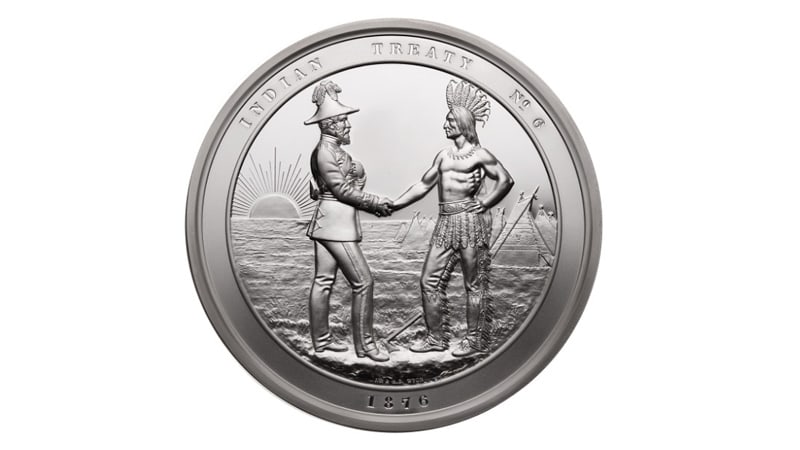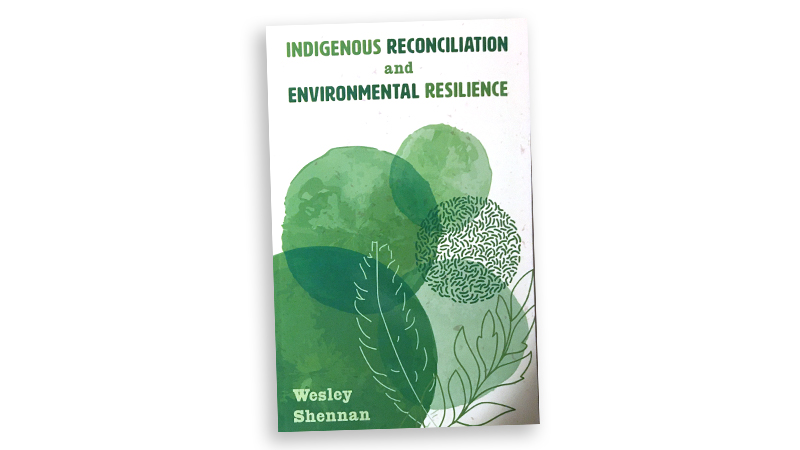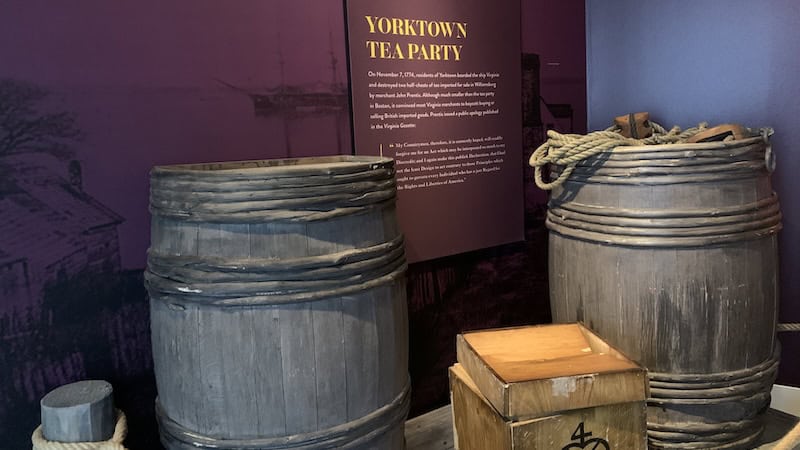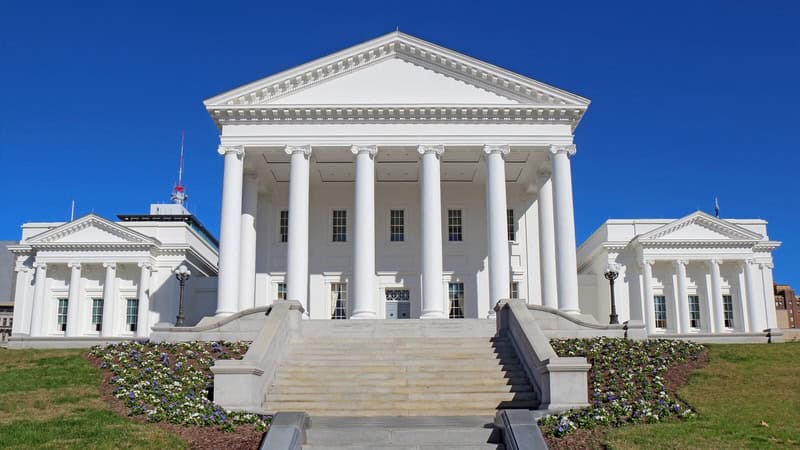Partnerships with Indigenous Peoples

As with any relationship between individuals or groups, understanding and acceptance increases the strength and success of the connection. This overview of common differences between North American settlers and First Nations provides a helpful basis for successful partnerships with Indigenous peoples. Wesley Shennan, a member of the Michel First Nation in Canada, addresses differences that can aid in understanding.
Abridged excerpt from: Indigenous Reconciliation and Environmental Resilience by Wesley Shennan, used with the permission of the author.
Treaty medals, like the one shown above, were given to signees in Canada when they signed a treaty. The author’s great-great-grandfather signed an adhesion to Treaty 6 in 1878 (Treaty 6, like others, was signed over a period of years, and each additional signing was named an adhesion). The medals were very much part of the regalia of the treaty-signing ceremony. They provided a lasting visual reminder to all participants of the treaty commitments. The gesture of the tentative handshake suggests equality and alludes to a British way of making a promise. Ideally, the medal represents equal nations in partnership.
This medal portrays the Treaty Commissioner and a First Nations man, and, between the two men lies a hatchet buried in the ground. It also depicts the sun, grass, and water, signifying the perpetuity that treaties embody; and it shows First Nations’ teepees, their deep appreciation of Mother Earth, their respect for other traditions, the need to live in harmony, and the interconnectedness of all living things contributing to a better way of life.
But partnerships with Indigenous peoples does not begin or end with the signing of a treaty. The United Nations Declaration on the Rights of Indigenous Peoples (UNDRIP) was adopted by the General Assembly on September 13, 2007. UNDRIP was adopted by statute in Canada on June 21, 2021, to coincide with National Indigenous Peoples Day. And since that signing, there have been numerous activities for reconciliation with Indigenous Peoples in Canada by both the federal and many provincial governments.
Today’s Canada is multicultural with a plethora of worldviews; Indigenous cultures do not share the same worldview, nor do settler cultures. And it is beyond a short piece like this to provide a comprehensive examination of these various cultures and their differences. However, it is possible to start a discussion using general terms, which ideally provides an understanding of the core differences between Indigenous and settler worldviews. This core understanding is an important component in achieving cultural harmony, respectful relationships, meaningful partnerships, and reconciliation.
Settler and Indigenous worldviews are different because they generally subscribe to opposite approaches to knowledge, connectedness, and science. Indigenous cultures focus on a holistic understanding of “all” that emerges from the millennium of their existence and experiences. Settler worldviews tend to be more concerned with science and concentrate on compartmentalized knowledge rather than understanding “all” (the bigger picture).
For this overview, I used the worldview comparison information provided by many authors and added some of my own interpretations, understandings, and ideas.
| EIGHT WORLDVIEW DIFFERENCES | INDIGENOUS VIEW | SETTLER VIEW |
| ONE:
Belief |
Indigenous society is spiritually oriented. The belief system is based on a spiritual world context. | Settler society is scientifically oriented. The belief system is based on skepticism, requiring proof as a basis of belief. |
| TWO:
Truth |
There can be many truths in Indigenous society; truths are dependent upon individual experiences. | In settler society, there is generally only one truth: based on science or based on Western-style law. |
| THREE:
The world and the natural environment
|
Indigenous society operates in a state of interrelatedness. Everything and everyone are related, and the accepted belief is that people, objects, and the environment (including plants, animals, and mountains) are all connected. Law, kinship, and spirituality reinforce this connectedness. Identity comes from connections. | Settler society usually views the world as a series of separate compartments – their view is compartmentalized. Everything and everyone are separate and are viewed as separate entities. The environment (including plants, animals, and mountains) is seen as connected, but understood and studied as separate components of a loosely connected whole. |
| FOUR:
Land |
The land is sacred and usually given by a creator or supreme being in Indigenous societies. Use of land is a sacred exercise. | The land and its resources are seen as existing for the use, development, and extraction for the benefit of all humans. |
| FIVE:
Time |
Time is cyclical and non-lineal. The seasons are central to this cyclical concept. Events are seen in relation to the seasonal cycles. For example, the garden will be planted after the snow has melted, the ground is warm, and there is no longer a threat of frost. | Time is usually lineal and future oriented. Events are seen in relation to the lineal organization of days, months, and years. For example, the garden will be planted the first weekend in May next year. |
| SIX:
Feeling comfortable |
Feeling comfortable is measured by the quality of your relationships with people, with the Creator, and with the environment. | Feeling comfortable is related to how successful you feel you have been in achieving your goals. |
| SEVEN:
Human beings |
Human beings are seen as interrelated and interconnected to each other, to the environment, and to the Creator. Human beings are not the most important entity in the world. | Human beings are seen at the top of a hierarchy in the world and are very important. The Creator (or God) may be seen as higher than human beings, but also may not be part of a belief system. |
| EIGHT:
Wealth |
Amassing wealth is important for the good of the community. A West Coast Potlatch ceremony is an example where wealth is shared. | Amassing wealth is for personal gain. Wealthy people are often revered and appear in comparative lists of wealthiness. |
As shown, there are vast differences in these two worldviews. Is one view right and the other wrong? No, they’re simply different. The table contains generalizations, but these generalizations are designed to draw attention to the differences between Indigenous and settler worldviews. By no means is it intended that this brief description be seen as a final word or concluding explanation. This is just a beginning to an understanding of the complexities surrounding worldviews. They are not static and are closer to a constant state of ongoing evolution and change.
Partnerships with Indigenous peoples are next to impossible without understanding the differences in world view. If one simply assesses the world view of one culture from a strict understanding of, and comparison with, their own culture, judgment and misunderstanding are the likely outcomes. However, being open to new ways of seeing the world, and understanding relationships, is a good beginning. Partnerships with Indigenous peoples require recognizing, acknowledging, and understanding these worldview differences.
Also from Wesley Shennan: Coral Reefs and Environmental Resilience
Wesley Shennan, a member of the Michel First Nation, Treaty 6, in the area currently known as Alberta, Canada, is a community planner and has been working with First Nations in British Columbia for the past 22 years. His education in both the physical and social sciences, and work experience, has led him to share his understandings and encourage others to take action. He lives with his wife, Elena, in the Okanagan valley in southern British Columbia – the traditional unceded territory of the Syilx Nations. He is the author of “Indigenous Reconciliation and Environmental Resilience” (FriesenPress, July 24, 2022).
PHOTO CAPTION OF FEATURE IMAGE: Treaty medal of 1876.



